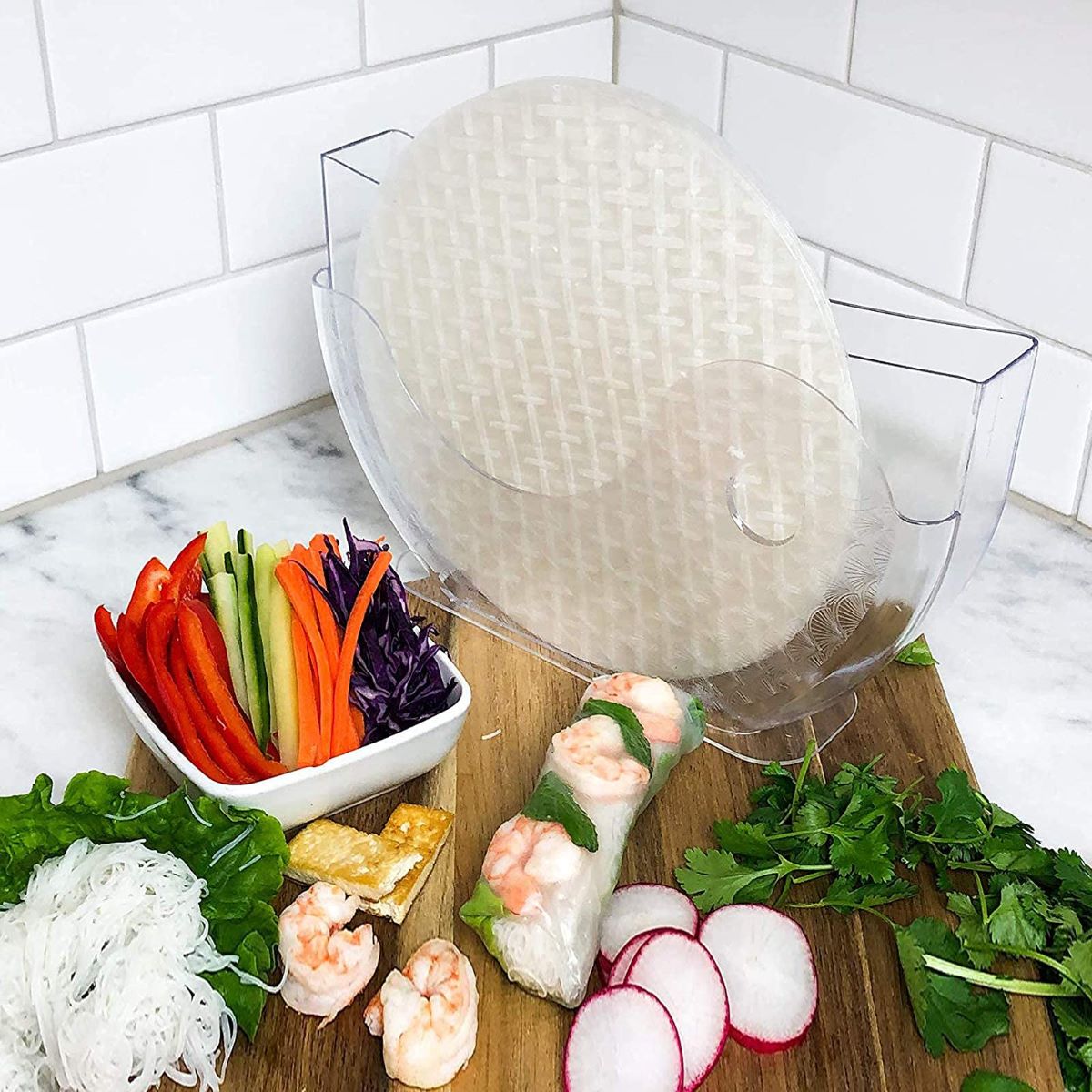

Articles
How To Store Rice Paper
Modified: August 24, 2024
Learn how to store rice paper and keep it fresh for longer. Our articles provide valuable tips and tricks for preserving rice paper effectively.
(Many of the links in this article redirect to a specific reviewed product. Your purchase of these products through affiliate links helps to generate commission for Storables.com, at no extra cost. Learn more)
Introduction
Rice paper is a versatile and delicate ingredient commonly used in Asian cuisine. It is a thin, translucent sheet made from rice flour, water, and sometimes tapioca starch. While rice paper is known for its use in spring rolls and other delectable dishes, proper storage is essential to maintain its quality and texture.
In this article, we will explore why proper rice paper storage is important and provide you with the best methods to keep your rice paper fresh and ready to use. Whether you store it in the pantry, fridge, or freezer, we will guide you through the steps to ensure its longevity and deliciousness.
So, let’s delve into the world of rice paper storage and discover how to preserve this delicate ingredient for your culinary adventures!
Key Takeaways:
- Proper storage of rice paper is crucial for maintaining its freshness, texture, and taste, ensuring a delightful culinary experience and cost savings by minimizing wastage.
- Whether stored in the pantry, fridge, or freezer, following the best methods and tips for rice paper storage preserves its quality, flavor, and pliability, enhancing your culinary creations every time.
Read more: How To Store Paper Artwork
Why Proper Rice Paper Storage is Important
Properly storing rice paper is crucial to maintain its freshness, texture, and taste. Here are a few reasons why you should pay attention to how you store your beloved rice paper:
Prolonged Shelf Life
Rice paper, like any other food product, has a limited shelf life. By storing it correctly, you can extend its freshness and usability. The right storage methods will help prevent moisture absorption, which can make the rice paper soggy and unusable, resulting in a disappointing culinary experience.
Preserves Texture
Rice paper is delicate and thin, with a unique soft and chewy texture. Improper storage can lead to the paper becoming dry, brittle, or overly moist, significantly altering its texture. By following the correct storage techniques, you can ensure that the rice paper retains its desirable texture, making it more enjoyable to eat and work with in your recipes.
Maintains Taste and Flavor
Storing rice paper properly helps preserve its natural taste and flavor. When exposed to air and moisture, rice paper can develop an unpleasant taste or absorb odors from its surroundings. By storing it in an airtight container or bag, you can prevent these issues and enjoy the authentic taste and flavor of your rice paper creations.
Read more: How To Store Important Papers
Cost Savings
By properly storing your rice paper, you can avoid unnecessary waste and save money in the long run. When rice paper goes bad or loses its quality due to improper storage, you will have to discard it and purchase new packs. Following the right storage methods ensures that you make the most out of your rice paper and minimize wastage.
Now that we understand the importance of proper rice paper storage, let’s explore the best methods for storing your rice paper to maintain its freshness and quality.
Best Methods for Storing Rice Paper
There are various methods you can employ to store rice paper effectively, depending on your preference and the available storage options. Here are the three best methods for storing rice paper:
1. Storing Rice Paper in the Pantry
If you plan to use your rice paper within a few weeks, storing it in the pantry is a suitable option. Follow these steps to ensure proper storage:
- Keep the rice paper in its original packaging or transfer it to an airtight container.
- Store it in a cool, dry place away from direct sunlight, moisture, and heat sources.
- Ensure that the container is tightly sealed to prevent the rice paper from absorbing moisture or becoming exposed to air, which can lead to dryness.
2. Storing Rice Paper in the Fridge
If you live in a humid climate or anticipate not using the rice paper for an extended period, storing it in the fridge is a better option. Here’s how to do it:
- Place the rice paper in an airtight container or resealable freezer bag to protect it from moisture and odors.
- Ensure the rice paper is properly sealed to prevent it from drying out.
- Store it in the fridge, preferably in the crisper drawer, where the temperature and humidity are relatively stable.
Read more: How To Store Paper Documents
3. Storing Rice Paper in the Freezer
If you want to store rice paper for an extended period, freezing it is an excellent option. Follow these steps:
- Wrap each piece of rice paper in plastic wrap or separate them with parchment paper to prevent sticking.
- Place the individually wrapped rice paper sheets in a freezer bag or airtight container.
- Ensure the bag or container is sealed tightly to prevent freezer burn and moisture absorption.
- Label and date the bag or container for easy identification.
- Store the rice paper in the freezer, where it can stay fresh for up to several months.
Remember to thaw the frozen rice paper in the refrigerator before using it. Allow it to reach room temperature before using in your recipes to maintain its texture and flexibility.
By employing these storage methods, you can ensure that your rice paper remains fresh, pliable, and full of flavor, ready to be transformed into delicious dishes.
Storing Rice Paper in the Pantry
Storing rice paper in the pantry is a convenient option if you plan to use it within a few weeks. With the right storage techniques, you can keep your rice paper fresh and ready for culinary creations. Here’s how to store rice paper in the pantry:
- Keep the Original Packaging or Use an Airtight Container
- Store in a Cool, Dry Place
- Tightly Seal the Container
- Use within a Reasonable Timeframe
Firstly, you can choose to keep the rice paper in its original packaging. Most rice paper comes wrapped in plastic or cellophane. However, if the original packaging is damaged or unreliable, it’s best to transfer the rice paper to an airtight container.
An airtight container will protect the rice paper from moisture, air, and pests, ensuring its longevity and preserving its quality.
Find a suitable spot in your pantry to store the rice paper. Choose an area away from direct sunlight, as exposure to sunlight can accelerate the deterioration of the rice paper and affect its texture.
Make sure the storage area is cool and dry, as excessive heat and humidity can cause the rice paper to become sticky or lose its crispness. Avoid storing rice paper near heat sources such as stoves or ovens that can compromise its quality.
Whether you’re using the original packaging or an airtight container, ensure that it is tightly sealed. This will prevent air and moisture from entering the container, which can lead to the rice paper losing its freshness and becoming dry or brittle.
Check the seal regularly to ensure it remains intact. If you notice any damage or loose seals, transfer the rice paper to a new container or use a different airtight storage option.
While properly stored rice paper can maintain its quality for an extended period, it is still recommended to use it within a reasonable timeframe. Aim to use the rice paper within a few weeks to ensure optimal freshness and taste.
Regularly check the rice paper for signs of spoilage, such as discoloration, mold growth, or an off smell. If any of these signs are present, it’s best to discard the rice paper to prevent any foodborne illnesses.
By following these steps, you can confidently store your rice paper in the pantry, knowing that it will remain fresh and ready for your favorite Asian dishes. Whether it’s for spring rolls, summer rolls, or other creative recipes, properly stored rice paper will enhance your culinary experience.
Storing Rice Paper in the Fridge
Storing rice paper in the fridge is an excellent option, especially in humid climates or if you don’t plan to use it for an extended period. Refrigeration helps maintain the freshness and quality of the rice paper. Here’s how to store rice paper in the fridge:
- Choose the Right Container
- Seal the Container Properly
- Store in the Crisper Drawer
- Rotate Regularly
Before refrigerating rice paper, ensure that it’s stored in an airtight container or resealable freezer bag. Using an airtight container or bag will protect the rice paper from moisture and odors, preventing it from becoming stale or absorbing unwanted flavors.
When placing the rice paper in the container or bag, make sure it is sealed tightly to prevent air from entering. This will help maintain the freshness and integrity of the rice paper, ensuring it stays soft and flexible.
Once the rice paper is securely sealed in its container, it’s time to find the ideal spot in your refrigerator. The crisper drawer, typically located at the bottom, provides a controlled environment with stable temperature and humidity levels, making it the perfect place to store the rice paper.
If your fridge doesn’t have a designated crisper drawer, you can place the rice paper towards the back of the refrigerator, away from any direct sources of cold air or potential spills.
While the refrigerator helps extend the shelf life of rice paper, it’s essential to rotate and use the older stock first. This practice ensures that you consume the rice paper before it reaches its expiration date and maximizes its freshness.
When you’re ready to use the rice paper, remove it from the fridge and allow it to come to room temperature before handling. This helps restore its flexibility and makes it easier to work with while assembling your favorite dishes.
Remember to check the rice paper periodically for any signs of spoilage, such as discoloration, mold, or an off smell. If you notice any of these signs, it’s best to discard the rice paper to avoid any foodborne illnesses.
By storing rice paper in the fridge using these simple steps, you can ensure that it stays fresh and ready for your culinary creations whenever the craving strikes.
Storing Rice Paper in the Freezer
If you want to store rice paper for an extended period, freezing it is an excellent option. Freezing rice paper helps maintain its freshness and texture, allowing you to enjoy it even months later. Here’s how to store rice paper in the freezer:
- Individually Wrap the Rice Paper
- Place the Wrapped Rice Paper in Freezer Bags or Containers
- Label and Date the Freezer Bags or Containers
- Store the Rice Paper in the Freezer
- Thawing and Using Frozen Rice Paper
Before freezing, it’s crucial to individually wrap each piece of rice paper. This prevents them from sticking together and makes it easier to thaw and use them individually. You can use plastic wrap or separate them with parchment paper.
Once the rice paper is wrapped, place them in freezer-safe bags or airtight containers. Make sure to remove as much air as possible from the bags before sealing them. Alternatively, vacuum-sealed bags can be used to provide an extra layer of protection against freezer burn and moisture.
To keep track of the storage time, label the freezer bags or containers with the date. This will help you identify the age of the rice paper later on and ensure that you use the oldest ones first.
Now it’s time to place the wrapped rice paper in the freezer. Choose a spot where the temperature remains consistently low, ideally below 0°F (-18°C). This temperature helps maintain the integrity of the rice paper and keeps it in pristine condition.
When you’re ready to use the frozen rice paper, remove the desired amount from the freezer and let it thaw in the refrigerator. Thawing it slowly in the fridge helps preserve its texture. Once it has thawed completely, it’s ready to be used in your favorite recipes.
It’s crucial to avoid refreezing previously thawed rice paper. Once it has thawed, use it within a few days to ensure the best quality and taste.
By following these steps, you can store rice paper in the freezer and have a ready supply of rice paper whenever you need it. Whether it’s for spring rolls, dumplings, or other delicious dishes, frozen rice paper will still retain its original quality and taste.
Read more: How To Store Wrapping Paper
Tips for Maintaining Rice Paper Freshness
Proper storage is key to maintaining the freshness of rice paper, but there are a few additional tips you can follow to ensure its longevity and quality. Here are some essential tips for maintaining rice paper freshness:
- Use Clean Hands and Tools
- Avoid Excessive Exposure to Air
- Moisten Rice Paper Properly
- Store in Smaller Portions
- Avoid Storing Near Strong Odors
- Rotate Stock Regularly
- Check for Signs of Spoilage
When handling rice paper, make sure your hands and any utensils are clean and dry. Contaminants or moisture from dirty hands or utensils can affect the quality and freshness of the rice paper.
Avoid leaving rice paper exposed to air for extended periods during preparation. Excessive exposure to air can cause the rice paper to dry out and become brittle. Work with only a few sheets at a time and keep the rest covered to maintain their freshness.
Rice paper needs to be moistened before using it for wrapping or cooking. However, be cautious not to oversoak the rice paper, as it can become mushy and difficult to work with. Follow the instructions on the packaging or wet the rice paper briefly in water until it becomes pliable.
If you frequently use rice paper, consider dividing it into smaller portions before storing it. This way, you can defrost only the amount you need, without having to thaw the entire batch. This practice reduces waste and helps maintain the quality of the remaining rice paper.
Rice paper can easily absorb surrounding odors. Keep it away from strong-smelling foods like onions, garlic, or spices that can impact its flavor. Storing it in an airtight container or bag can help prevent odor transfer.
Whether stored in the pantry, fridge, or freezer, make sure to rotate your rice paper stock regularly. Use the oldest packs first to ensure freshness and prevent any packs from expiring or going bad.
Regularly inspect the rice paper for any signs of spoilage, such as discoloration, mold growth, or an off smell. If you notice any of these signs, it’s best to discard the rice paper to avoid any potential health risks.
By following these tips, you can ensure that your rice paper stays fresh, pliable, and full of flavor, enhancing your culinary creations every time you use it. Take care of this delicate ingredient, and it will reward you with delicious results!
Conclusion
Proper storage is essential for maintaining the freshness and quality of rice paper. By following the best methods for storage and implementing a few important tips, you can ensure that your rice paper remains in optimal condition, ready to be used in your favorite Asian dishes.
Whether you choose to store rice paper in the pantry, fridge, or freezer, the key is to keep it in a cool, dry place away from moisture, direct sunlight, and heat sources. Using airtight containers or bags will help protect the rice paper from air exposure and prevent moisture absorption.
Storing rice paper in the pantry is suitable for short-term usage, while refrigeration is ideal for a more extended storage period. Freezing rice paper allows you to store it for months at a time while maintaining its freshness and texture.
Remember to thaw rice paper properly before using it, allowing it to reach room temperature. This will help restore its flexibility and make it easier to handle during the preparation process.
Additionally, maintaining cleanliness, avoiding excessive exposure to air, and proper moistening techniques will contribute to the overall freshness and quality of the rice paper.
By implementing these storage methods and tips, you can ensure that your rice paper stays fresh, pliable, and full of flavor, ready to be transformed into delicious spring rolls, summer rolls, dumplings, and more.
So, the next time you stock up on rice paper, remember to store it correctly for maximum freshness and enjoy the delightful culinary experiences that it can bring to your table!
Now that you've mastered storing rice paper, let's keep that momentum going! If your pantry feels cluttered, you'll love our guide on pantry organization. Smart storage solutions can transform your space, making every item easy to find and beautifully displayed. This guide not only simplifies your kitchen but also injects a sense of calm into daily meal prep.
Frequently Asked Questions about How To Store Rice Paper
Was this page helpful?
At Storables.com, we guarantee accurate and reliable information. Our content, validated by Expert Board Contributors, is crafted following stringent Editorial Policies. We're committed to providing you with well-researched, expert-backed insights for all your informational needs.

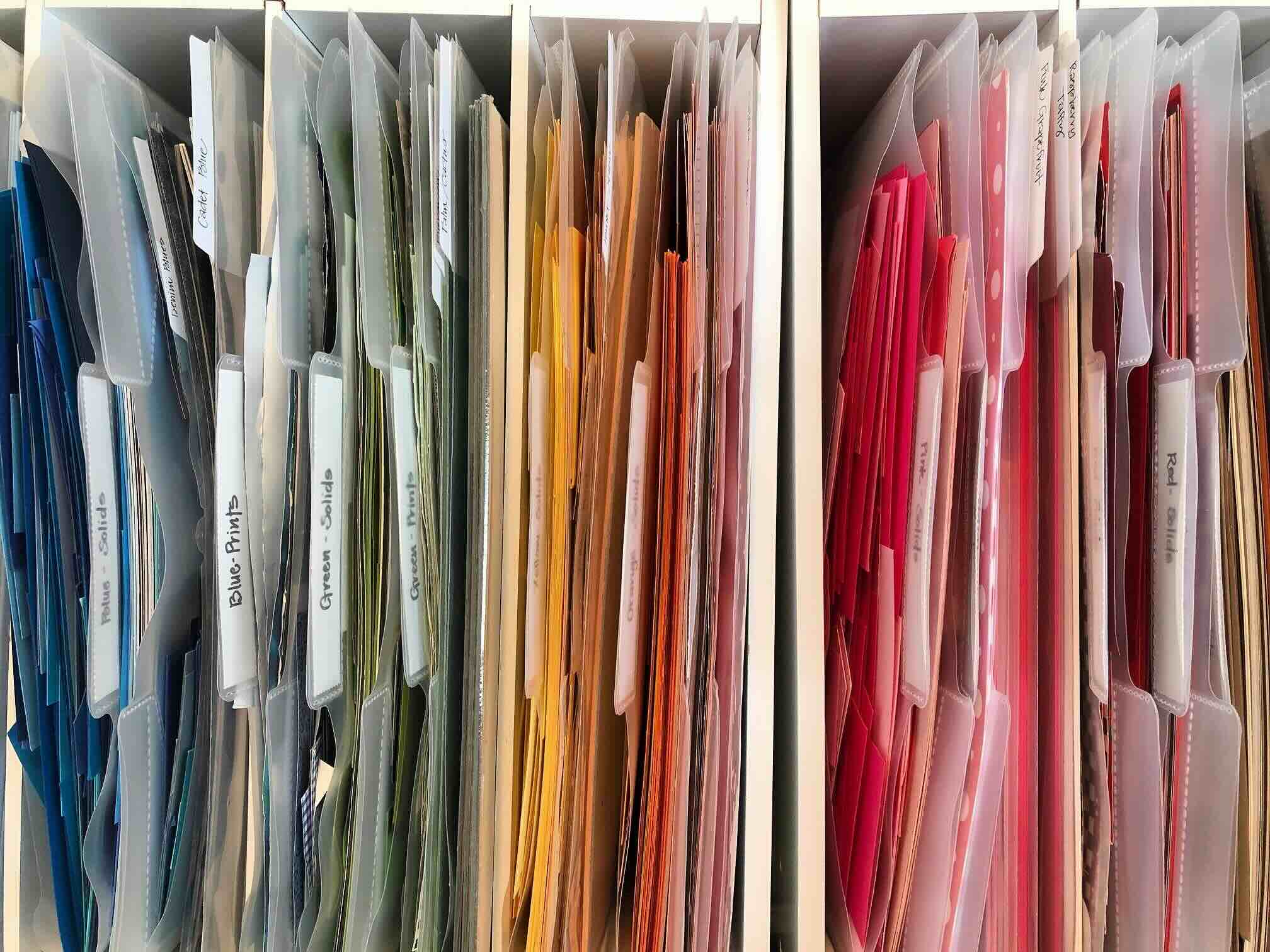
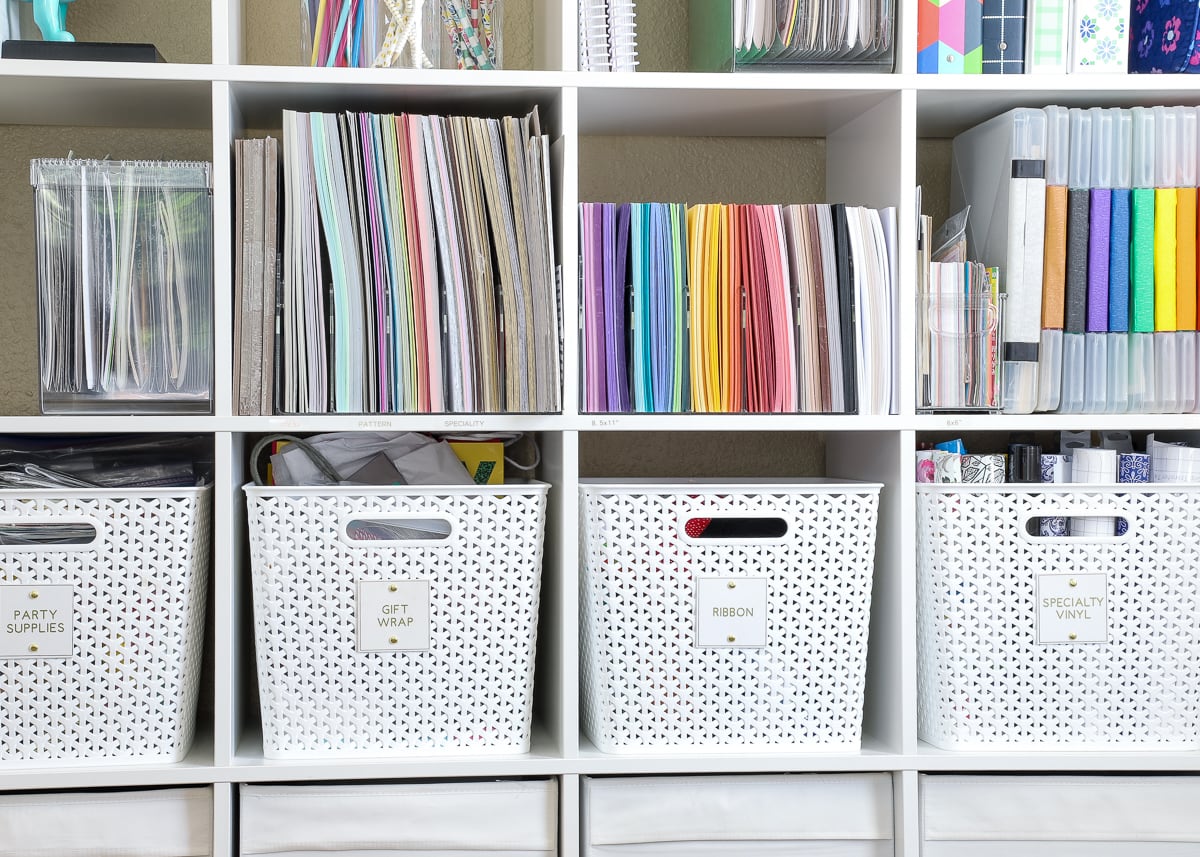

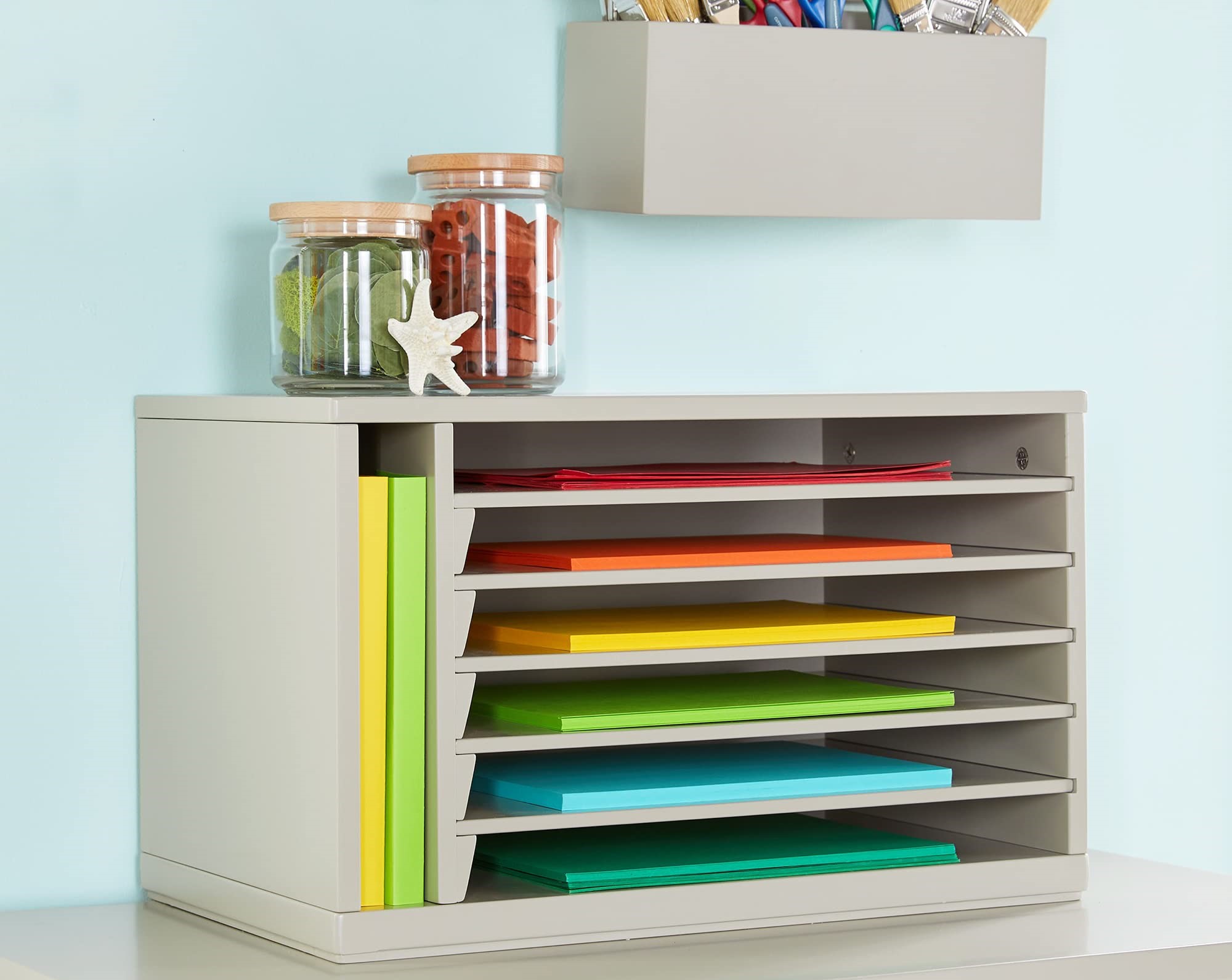
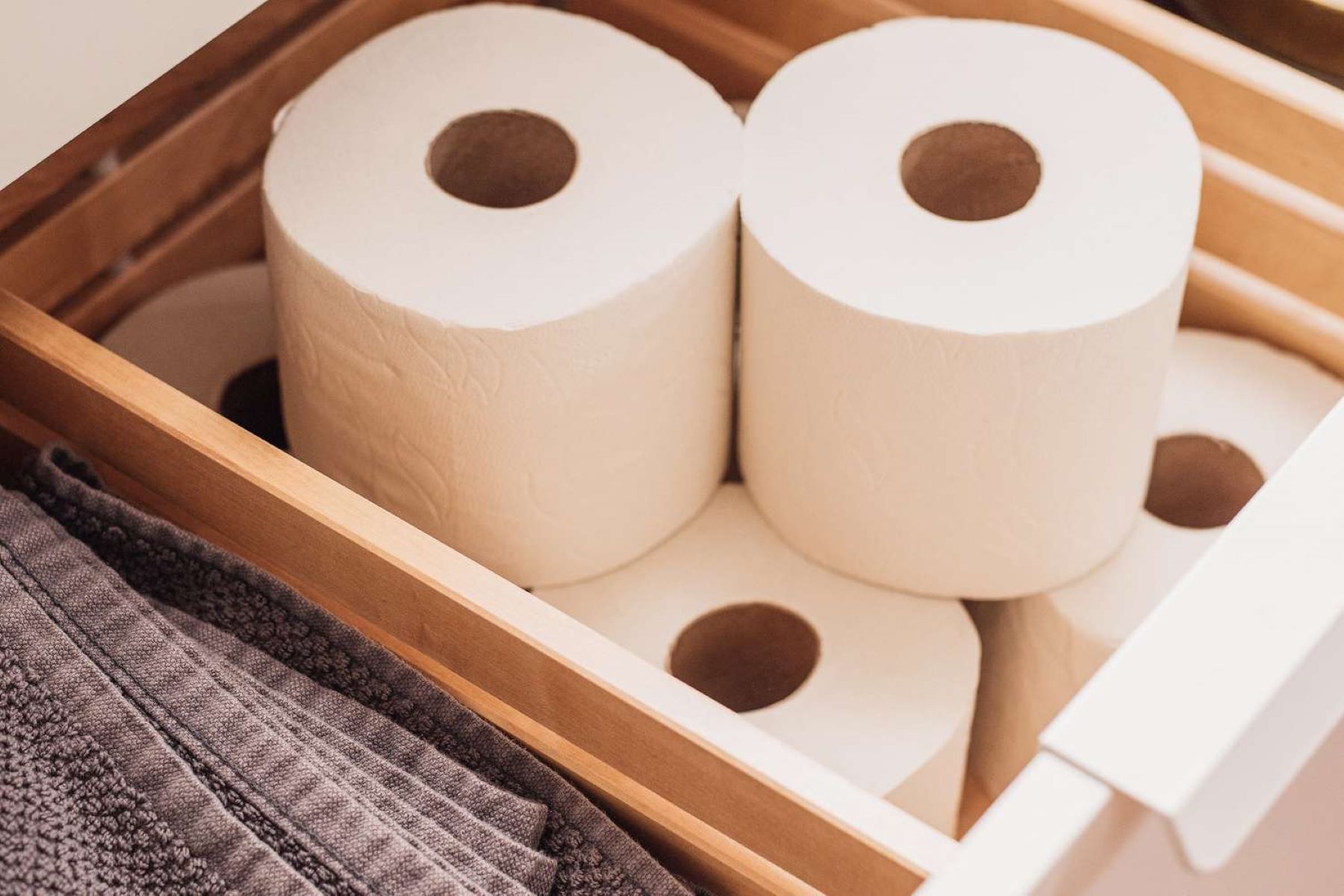







0 thoughts on “How To Store Rice Paper”